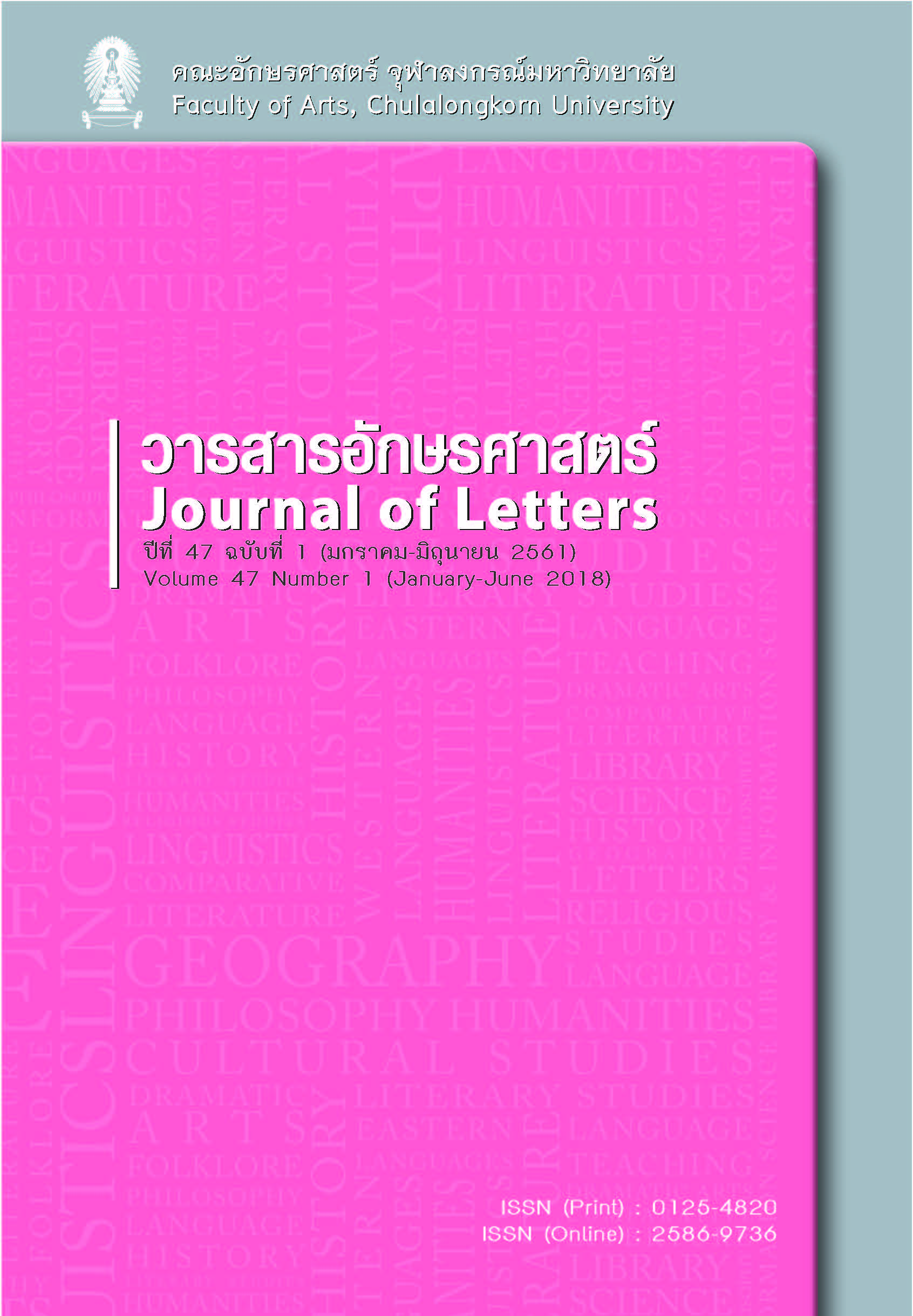Sentence Structure: An Obstacle to Understanding English Poetry
Keywords:
sentence structure, poetic license, English poetry, understanding poems, teaching poemsAbstract
This research studies different types of sentence structures regarded as hindrances to an understanding of English poetry among Thai students, especially beginners, and suggests teaching activities to help reduce such problems. The sentence structures hypothesized to present obstacles are syntactic classes, pronoun references, inversion, coordination of noun phrases, verb phrases and adverb-like phrases, and phrasal and clausal modifiers as interrupting modifiers. The researchers designed questions to check the aforementioned grammar points, using three selected poems: Robert Frost’s “Out, Out –,” Henry Wadsworth Longfellow’s “The Cross of Snow,” and Dudley Randall’s “Ballad of Birmingham.” The subjects of the research were English-major sophomores. The findings show that these grammar points are not the sole factors impeding the understanding of English poems; there are other factors involved as well. Those factors are sentence length, the distance between the heads and the modifiers, and the insertion of other modifiers between a head and its modifier. The researchers also suggest before–between–after activities expected to enhance the understanding of English poetry among Thai students.
References
Biber, D., Johansson, S., Leech, G., Conrad, S., & Finegan, E. 1999. Longman Grammar of Spoken and Written English. London: Longman.
Chomsky, Noam. 1965. Aspects of the Theory of Syntax. Cambridge, M.A.: MIT Press.
Culler, Jonathan. 1975. Structuralist Poetics, Structuralism, Linguistics and the Study of Literature. London: Routledge.
Dutta, Sujit K. 2001. Teaching Poetry in the School Classroom: An Integrated and Communicative Approach. CAUCE. 24: 519–537.
Johnson, G., & Arip T. R. (Eds.) 2015. Perrine’s Literature Structure, Sound, and Sense (12th ed.). Cengage Learning.
Killander, Carla Cariboni. 2011. Poetry in Foreign Language Teaching: Aspects of a Major Challenge. Proceedings of ICERI 2011 Conference.
Khansir, Ali Akbar. 2012. Teaching Poetry in the ELT Classroom. International Review of Social Sciences and Humanities. 3(1): 241–245.
Levin, Samuel R. 1962. Poetry and Grammaticalness. Proceedings of the Ninth International Congress of Linguists. Cambridge: 308–314.
McMichael, George. (Ed.). 1985. Concise Anthology of American Literature. (2nd ed.). New York: Macmillan.
Nowottny, Winifred. 1962. The Language Poets Use. London: Athlone.
Panajoti, Amela. 2013. Poetic Syntax: Meaning @ Structure. Bulletin of the Transilvania University of Brasov 1: 87–98.
Perkins, G., & Perkins, B. 1999. The American Tradition in Literature. (9th ed.). New York: McGrawhill.
Perrine, Laurence. 1997. Sound and Sense: An Introduction to Poetry. New York: Hartcourt, Brace & World.
Rezai, Abbas Ali. 2001. Poetry in English. Tehran: The Centre for Studying and Compiling University Books in Humanities.
Shakespeare, William. 1987. Macbeth, ed. T. J. B. Spencer. Middlesex: Penguin.
Widdowson, Henry G. 1975. Stylistics and the Teaching of Literature. London: Longman.
Woloski, Shira. 2001. The Art of Petry: How to Read a Poem. New York: Oxford University Press.
Downloads
Published
How to Cite
Issue
Section
License
Copyright and plagiarism
Authors are responsible for obtaining permission to use copyrighted materials from copyright owners. Authors are responsible for observing requisite copyright law when quoting or reproducing copyrighted materials. Quotations and reproductions of content from other published sources must be accompanied by a reference and all sources should be clearly listed in the references section. Quotations and reproductions of content from external sources without due attribution could be considered a severe infringement of academic conduct and may constitute a legal offence under the Copyright Act of B.E. 2537. Any legal ramifications arising from the infringement of copyright regulations would be the sole responsibility of the author(s).



